10 best trees with unusual bark for year-round interest – don't let bright blossoms and colorful foliage take all the glory in your yard
Pick a variety with an uniquely patterned or peeling bark for visual interest even in winter
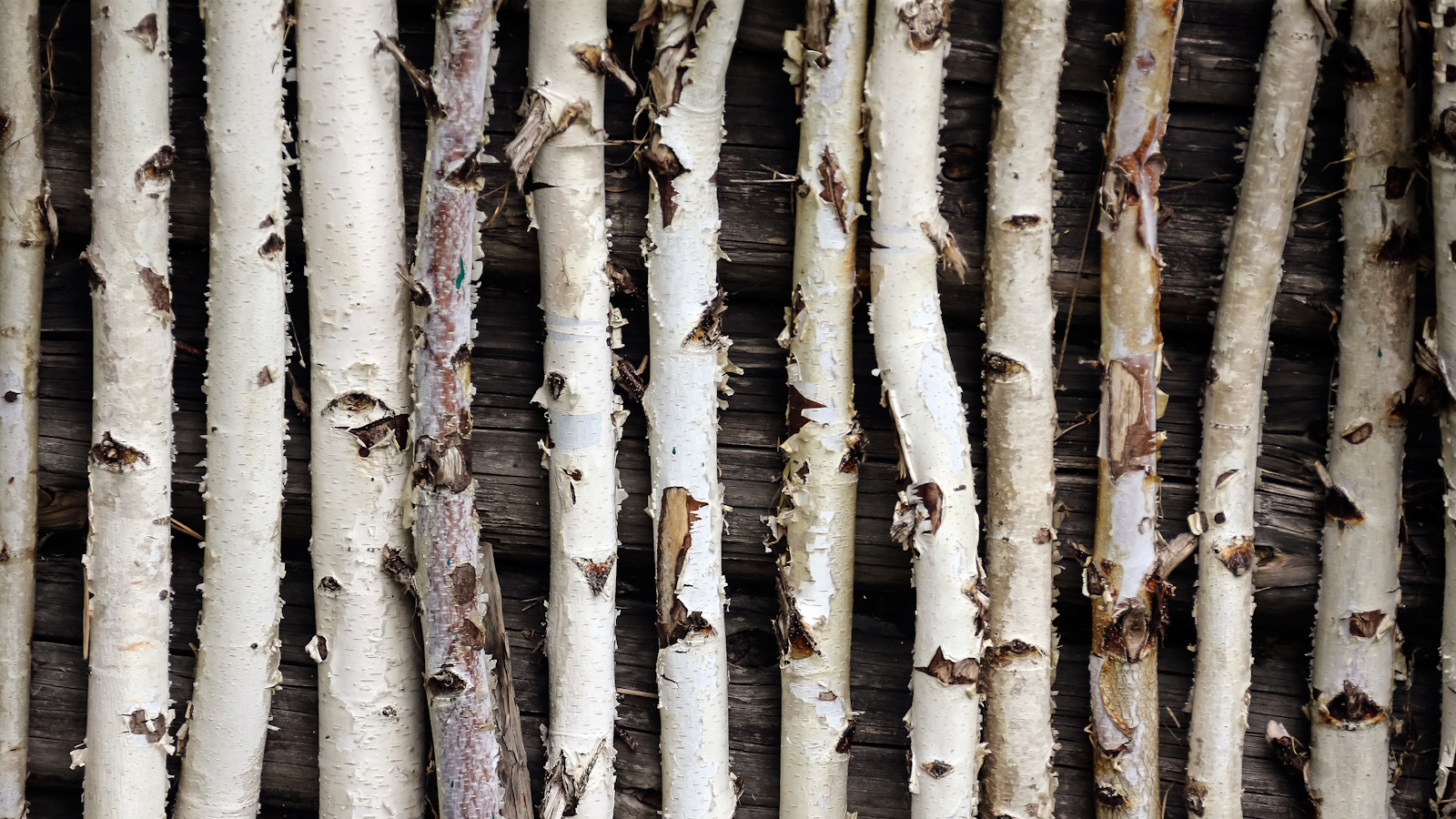
- 1. Strawberry tree (Arbutus Marina)
- 2. Pacific Madrone (Arbutus Menziesii)
- 3. American Sycamore (Platanus occidentalis)
- 4. Crape myrtle (Lagerstroemia ssp.)
- 5. Coral Bark Maple (Acer palmatum 'Sango-kaku')
- 6. Lacebark Pine (Pinus bungeana)
- 7. Redbuds (Cercis ssp)
- 8. Cork Oak (Quercus suber)
- 9. Paper Bark Maple (Acer griseum)
- 10. Heritage River birch (Betula nigra 'Cully')

The bark of a tree is its own protection against the weather. While we shrug on a coat when it’s wet or cold, a tree will grow its own to insulate itself, keeping moisture out when it’s raining and in when it’s hot.
Touching or hugging a tree can help us feel closer to nature and more content. Its rough textured comfort causes the release of oxytocin, known as the love hormone, for a feeling of warmth and wellbeing. In my opinion, the beauty of bark shouldn’t be overshadowed by colorful displays of blossom or leaves. In some trees, it can be the most interesting and attractive part, bringing visual joy all year round and long after the pretty petals have blown away and the leaves fallen.
If you’re planning a display of statement trees or are creating a tall barrier with trees for privacy, our experts recommend 10 of the best to plant with unusual bark that will bring eye-level interest and textural pleasure to the yard, whatever the season.
1. Strawberry tree (Arbutus Marina)
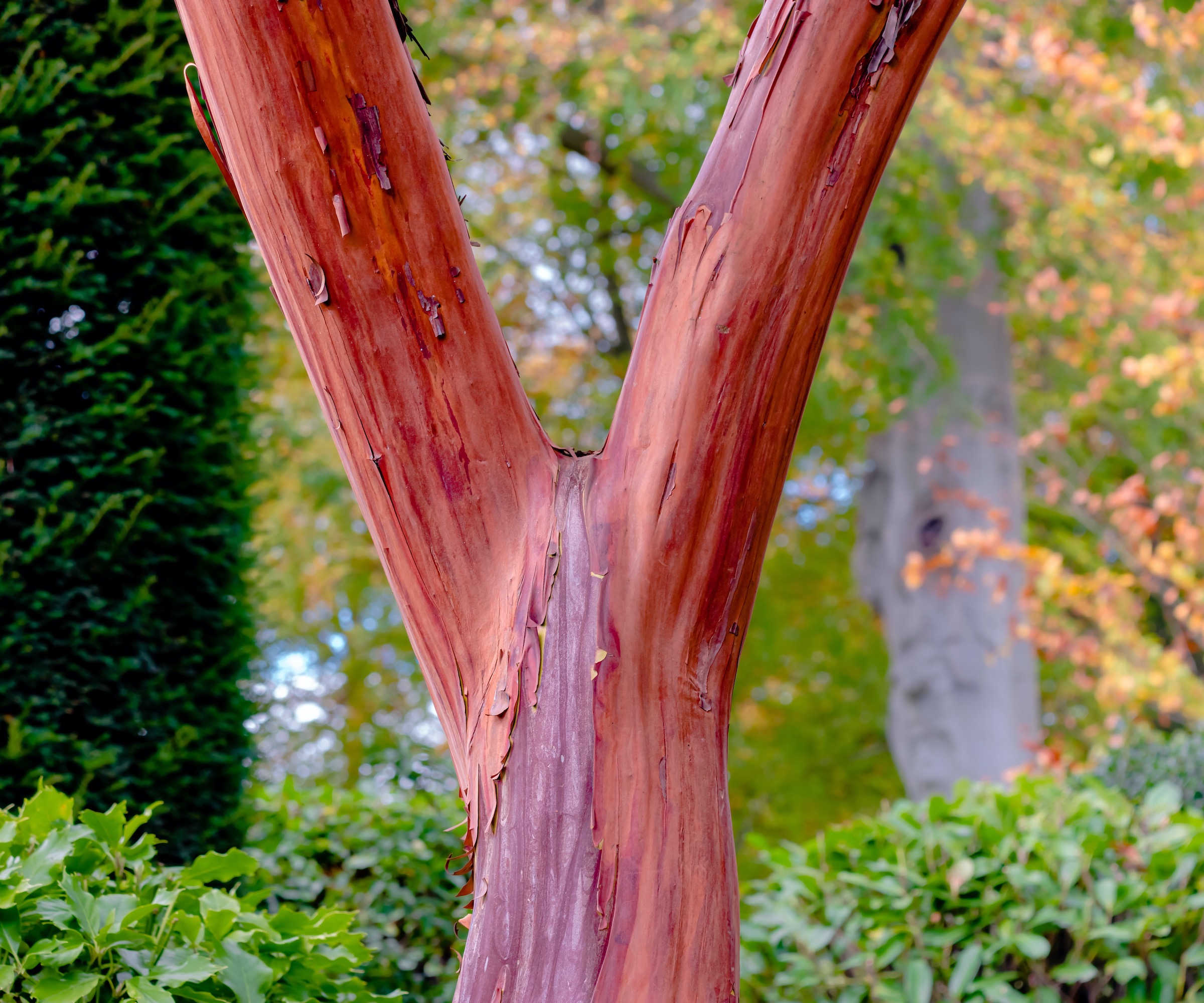
‘A clever designer will be sure to select trees with interesting bark that makes it a point of interest even in the dead of winter when the leaves are gone,’ says landscaper AJ Beams.
'In California, I like to use native trees when possible. The Arbutus Marina and its smaller cousin, Arbutus Unedo, are called strawberry trees. They have peeling, red bark evocative of Manzanita (an evergreen shrub or small tree with smooth orange or red bark).'
They grow in USDA hardiness zones 8-10 and the Marina can grow between 25-50 feet tall. It sheds its smooth, mahogany colored bark annually to reveal new bark that is a distinctive cinnamon tone.
The tree does produce edible fruit, but it isn’t as sweet as normal strawberries, so better used in jams and jellies.
Enjoy color from the fruit, flowers and bark with a Marina Strawberry Tree Multi from Plants Express.

AJ is an experienced landscaper and a landscape and irrigation system designer in California. Working on residential and commercial projects, he is committed to creating water-efficient landscapes.
2. Pacific Madrone (Arbutus Menziesii)
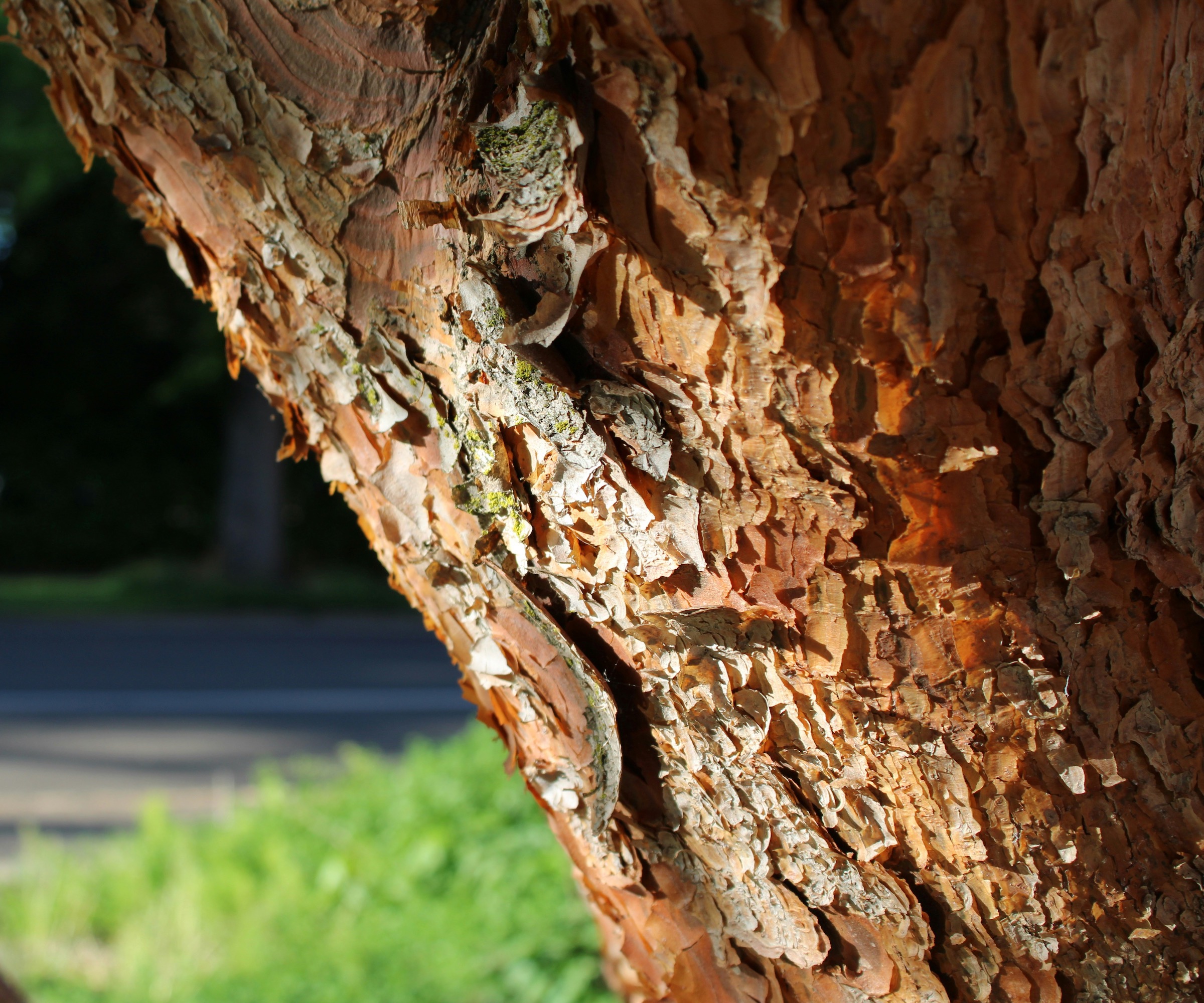
The Pacific Madrone stands out as much for its height as its unusual bark that strips away to reveal a completely different color underneath.
In fact, in the right sunny and dry coastal conditions in zones 7-10, the red berry-bearing tree can grow nearly 100 feet tall.
'Similar to the unedo, these larger trees have a smooth, beautiful exterior,’ says AJ. ‘But give them lots of space in your yard, as they are big when fully grown.'
An evergreen, it has a thin, rich orange-red bark. When it matures, the old bark peels away in thin sheets, to reveal smooth and satiny new bark that is greenish silver in color.
Find Pacific Madrones for sale at nurseries on the west coast through Calsape, the California Native Plant Society.
3. American Sycamore (Platanus occidentalis)
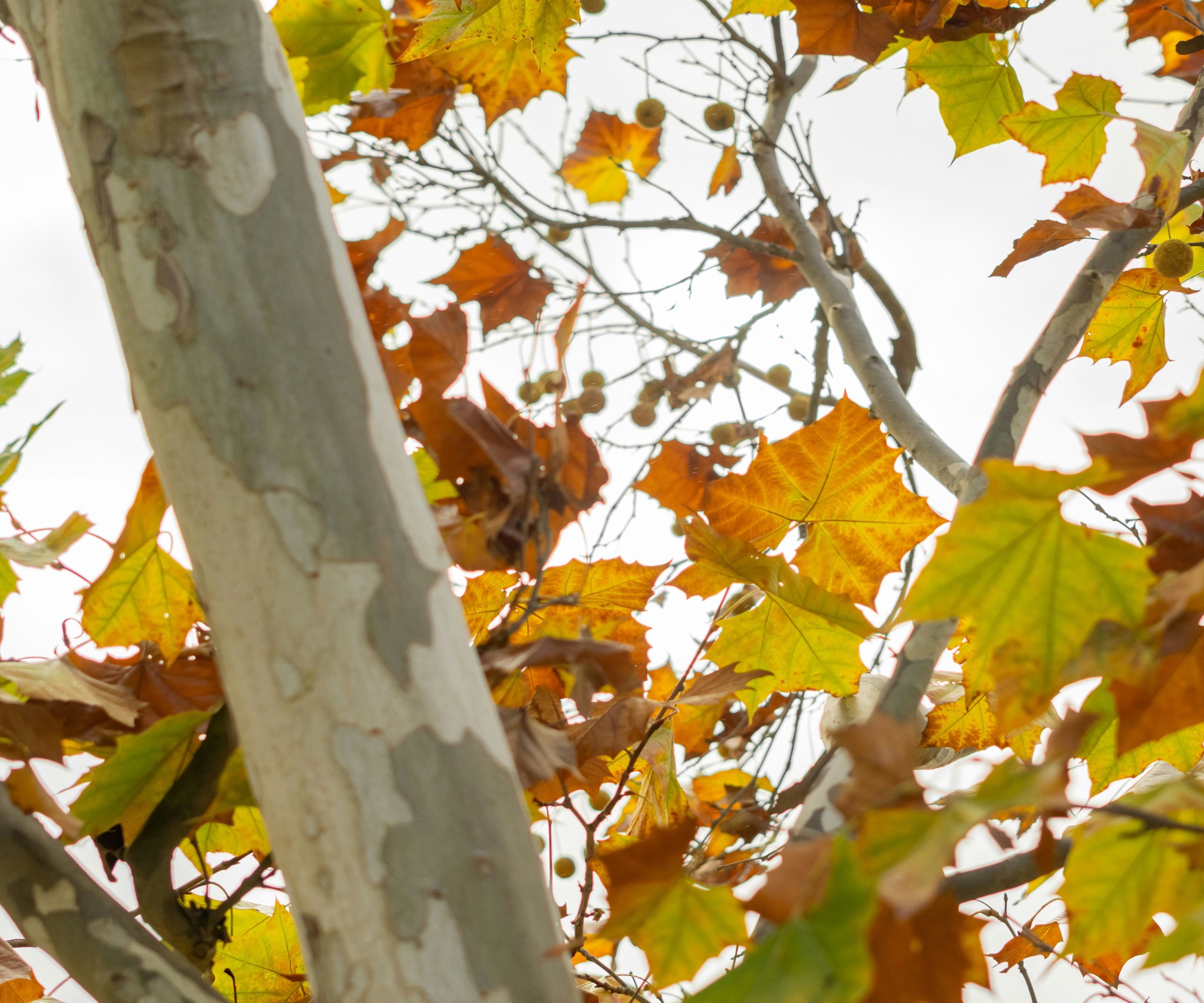
‘For a large, dramatic statement, Platanus occidentalis is a fantastic choice,’ says plant expert LeAnne Samuelson. ‘Bark is nature’s artwork, and the bark on this tree exfoliates to reveal a patchwork of white, gray, and brown tones.'
Easy and quick to grow, it is best suited to zones 4-9. It can add six feet a year, reaching a height of around 70 feet, with a dense, broad canopy that makes it an ideal shade tree in summer.
‘It thrives in moist, fertile soils and tolerates urban pollution and road salt,’ adds LeAnn. ‘It needs regular watering in hot weather, but when it comes to pruning, only do it to remove any deadwood.’
Living hundreds of years, the American Sycamore is a legacy tree that will create a statement in any yard long after the person who plants it is gone.
A fast growing American Sycamore from PlantingTree.com is the perfect shade tree that can withstand winds and high weather.

A passionate plant expert, LeAnne is the driving force behind Prestige Botanicals. She has years of experience in horticulture and floral design, ands is committed to helping pleople make informed choices about home gardening and plant care.
4. Crape myrtle (Lagerstroemia ssp.)
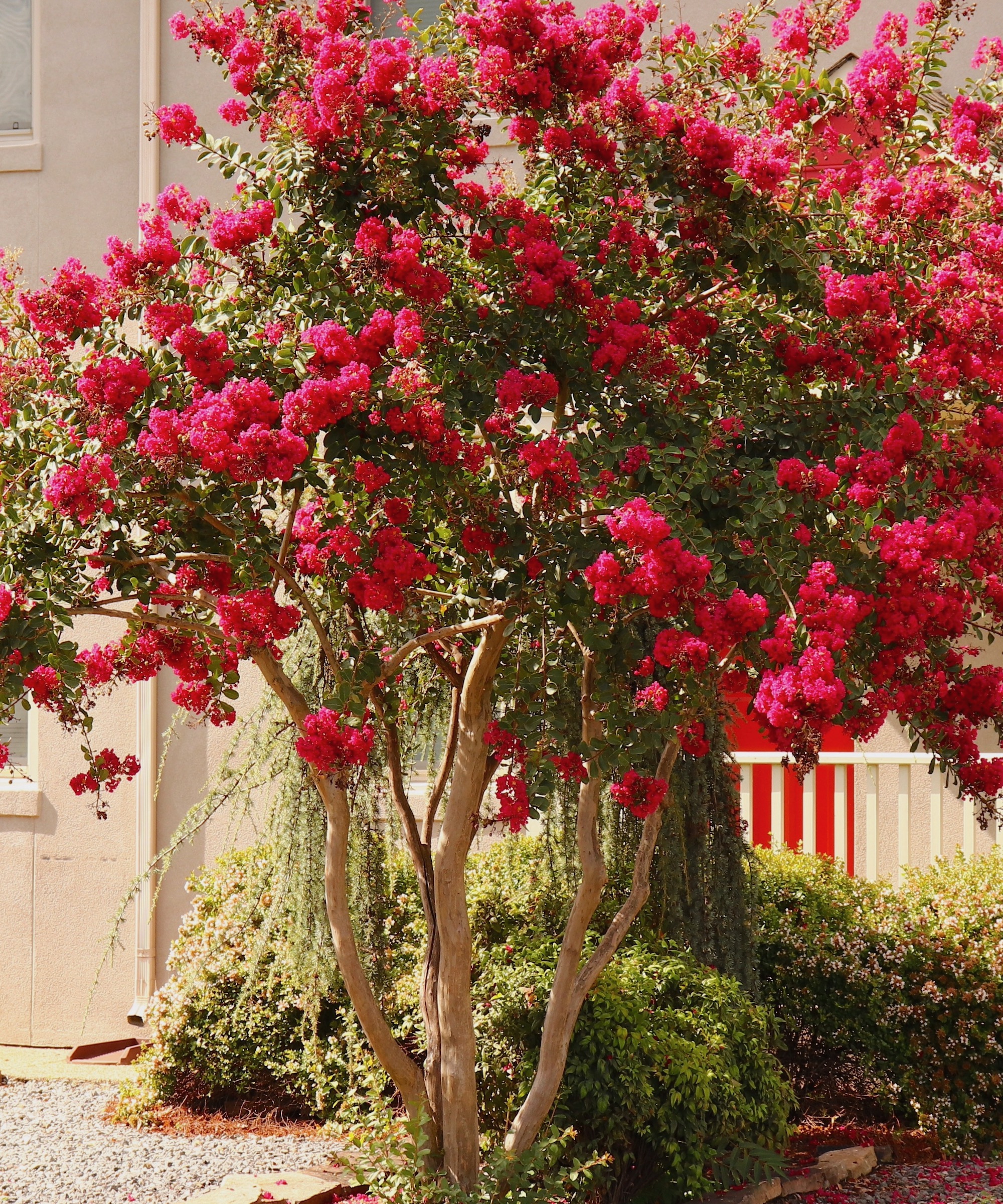
The crape or crepe myrtle is another tree that sheds its bark every year to reveal a hidden beauty beneath.
‘Crape myrtle grows into beautiful flowering trees with smooth, mottled bark and incredible structure,’ says AJ. ‘It’s a versatile tree that is often hard pruned to a large shrub. Try getting a multi-trunk variety, and then let it grow naturally, only pruning any dead branches.’
This deciduous tree grows best in zones 7-11, flourishing in the heat and humidity.
Known for its long-lasting, crinkly, crepe-like flowers, once they fade and the leaves have fallen, it is the turn of the bark to impress in a mature tree, peeling away to show the warm tones beneath. Ranging first from cream to beige to cinnamon and bright, the color eventually fades to a light green-grey and dark red.
For an explosion of color in your yard, the multi-stemmed Muskogee Crape Myrtle from Fast Growing Trees has a profusion of purple flowers in summer and cinnamon-hued bark in winter.
5. Coral Bark Maple (Acer palmatum 'Sango-kaku')
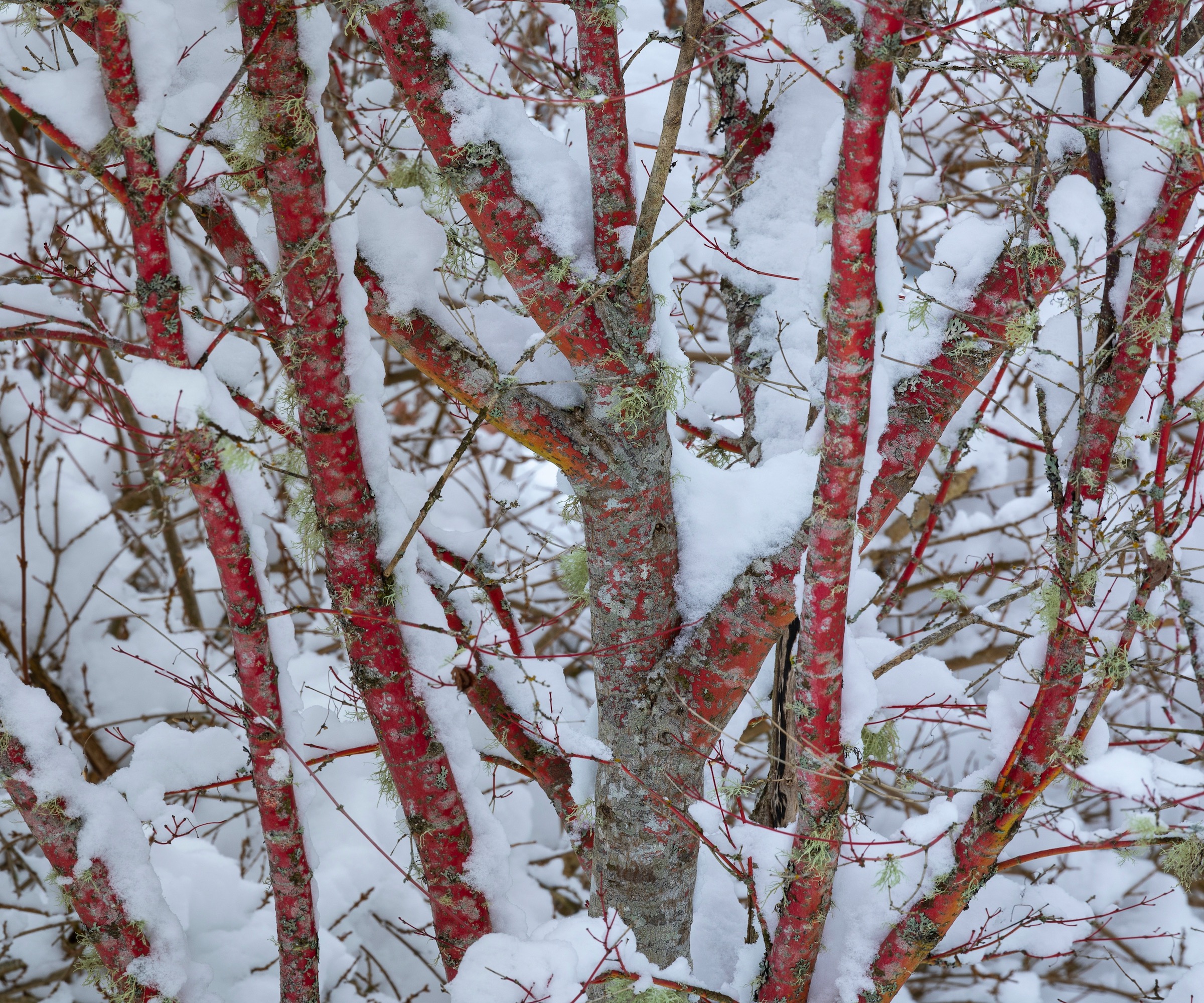
Warm up your snowy yard with the fiery red bark and branches of the Coral Bark Maple, revealed in its full glory when the delicate, five-pointed leaves have all dropped.
‘This is a personal favorite for winter pop of color,’ says tree-care expert Lisa Tadewaldt. ‘The red color in the bark is bright and will stand out in most landscapes. ‘These trees look best when professionally pruned, but will also look good without it if they are not the centerpiece of your yard.
‘The leaves in summer are a more yellowish green, bringing additional color variation. Although they like the sun, they can get sunscald (which can cause discoloration, blisters, and potentially kill the tissue) if it is too intense at its height.’
The Coral Bark Maple grows in zones 5-8 and reaches between 15-25 feet tall when mature. Low maintenance and drought tolerant, it is also resistant to most pests and diseases.

As the founder of Urban Forest Pro, a tree service company based in Portland, Lisa is experienced in all aspects of tree care, from selection and planting to maintenance and removal.
6. Lacebark Pine (Pinus bungeana)
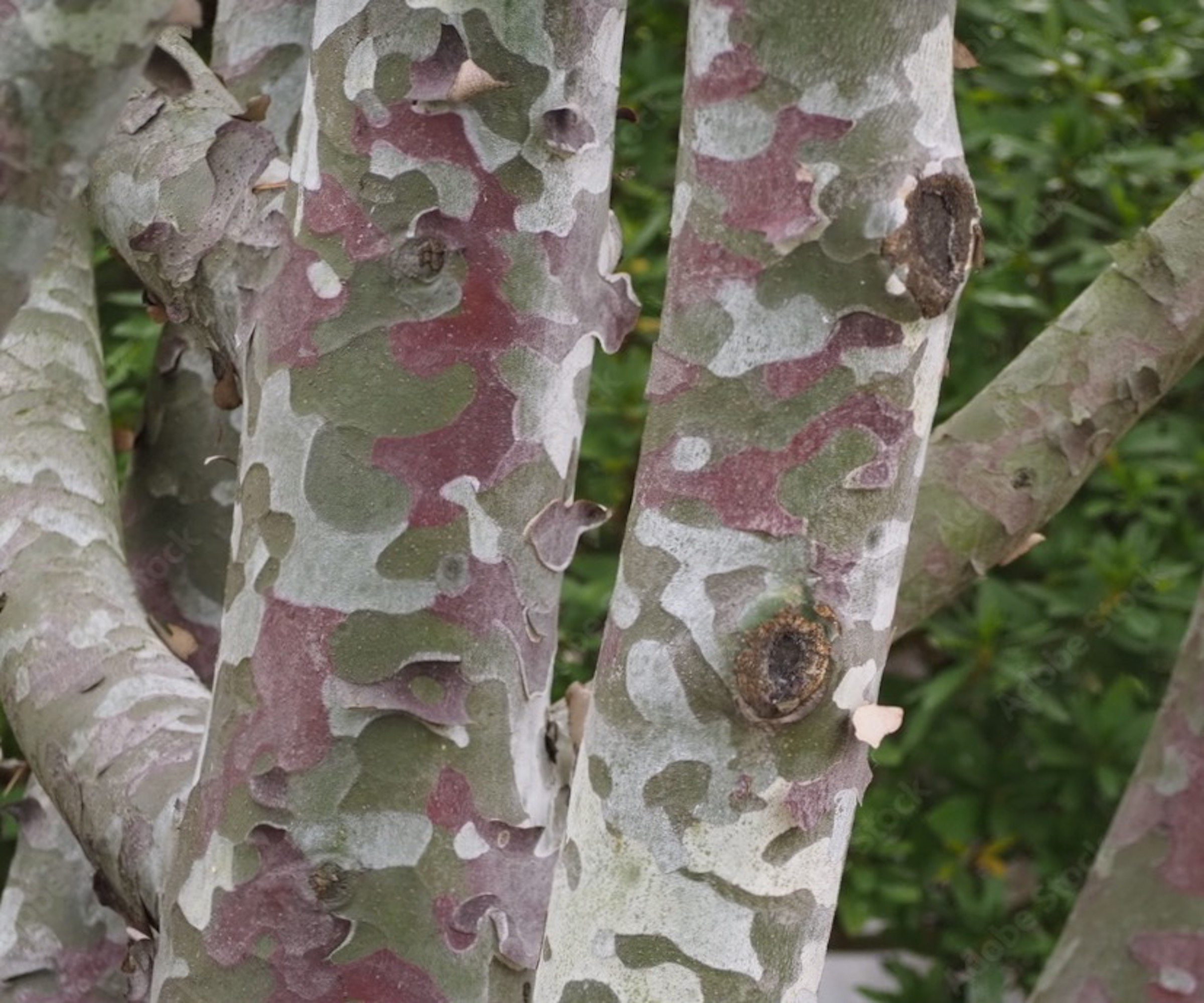
This slow-growing evergreen is also commonly known as Bunge’s Pine, though the prettier sounding Lacebark is a far more apt description of its protective outer coating.
‘The bark peels away in puzzle-like patches of cream, gray, and green, creating a stunning mosaic,’ says LeAnne.
It is native to China but grows in zones: 4–8 in the US. ‘It prefers full sun and well-drained soil, and requires minimal care – just occasional pruning for shape,' adds LeAnne. Removing the lower branches will reveal more of the camo-patterned trunk.
Enjoying the full beauty of the bark will take patience, however, as it only develops it characterful coverage as it matures.
7. Redbuds (Cercis ssp)
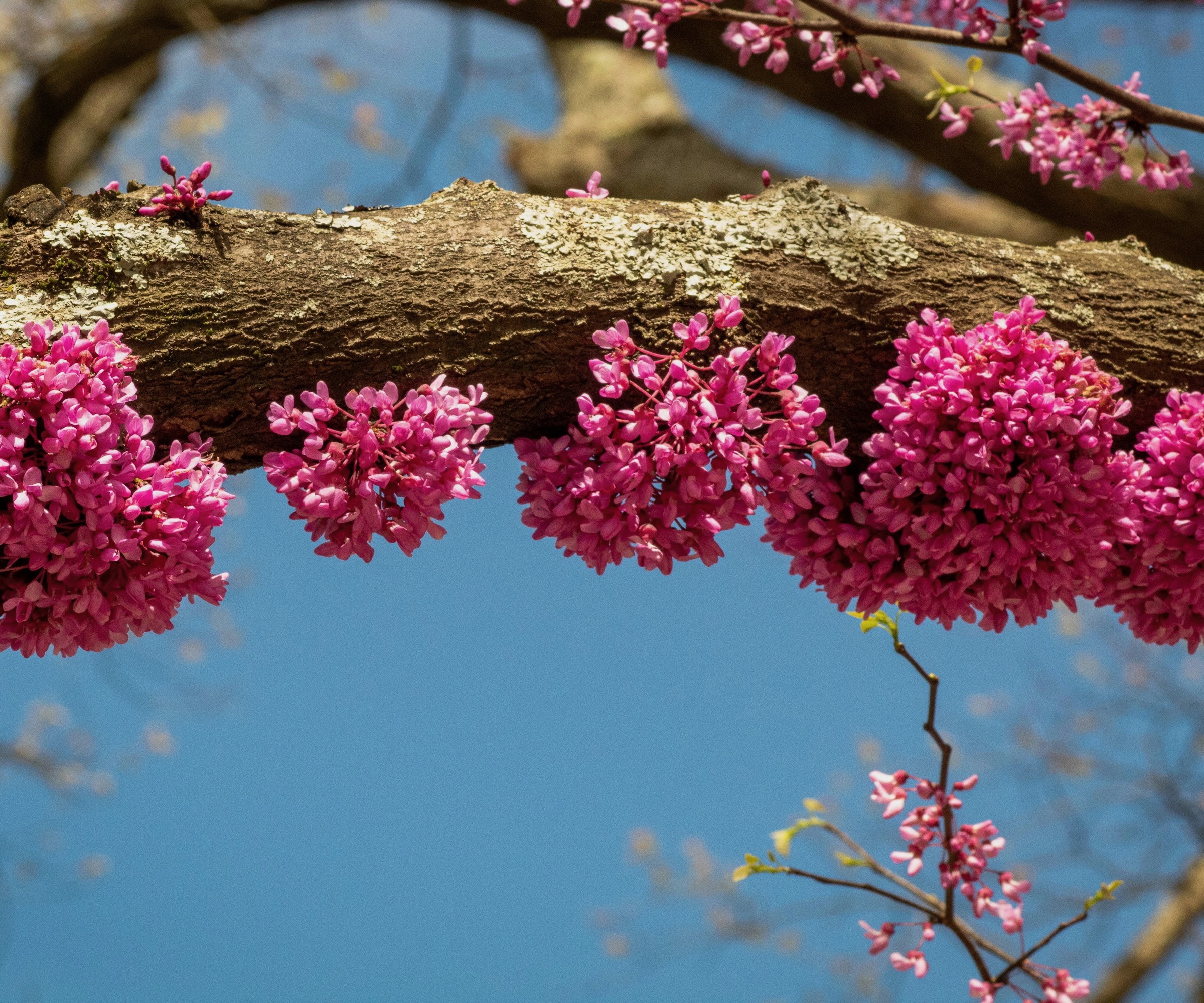
‘This has a smooth silver bark with a magic trick every spring,’ says AJ. ‘The first signs of it waking up for the growing season are a flurry of beautiful, pink blooms coming from everywhere on the bark. It's like the opening prelude of a fireworks show.’
This large deciduous shrub or small tree is native to North America and grows in zones 4-9. It needs fertile, well-drained soil in sun or partial side. However, if planted in full sun, it will need regular watering in its first few years.
Once established, it is relatively drought tolerant but will benefit from the occasional deep watering when it is hot and dry. It can be pruned in late winter/early spring to remove dead or damaged branches, ensuring the full beauty of the blossom on the bark can be enjoyed.
Enjoy the sight of blossom all over the branches on a Redbud tree from PlantingTree.com.
8. Cork Oak (Quercus suber)
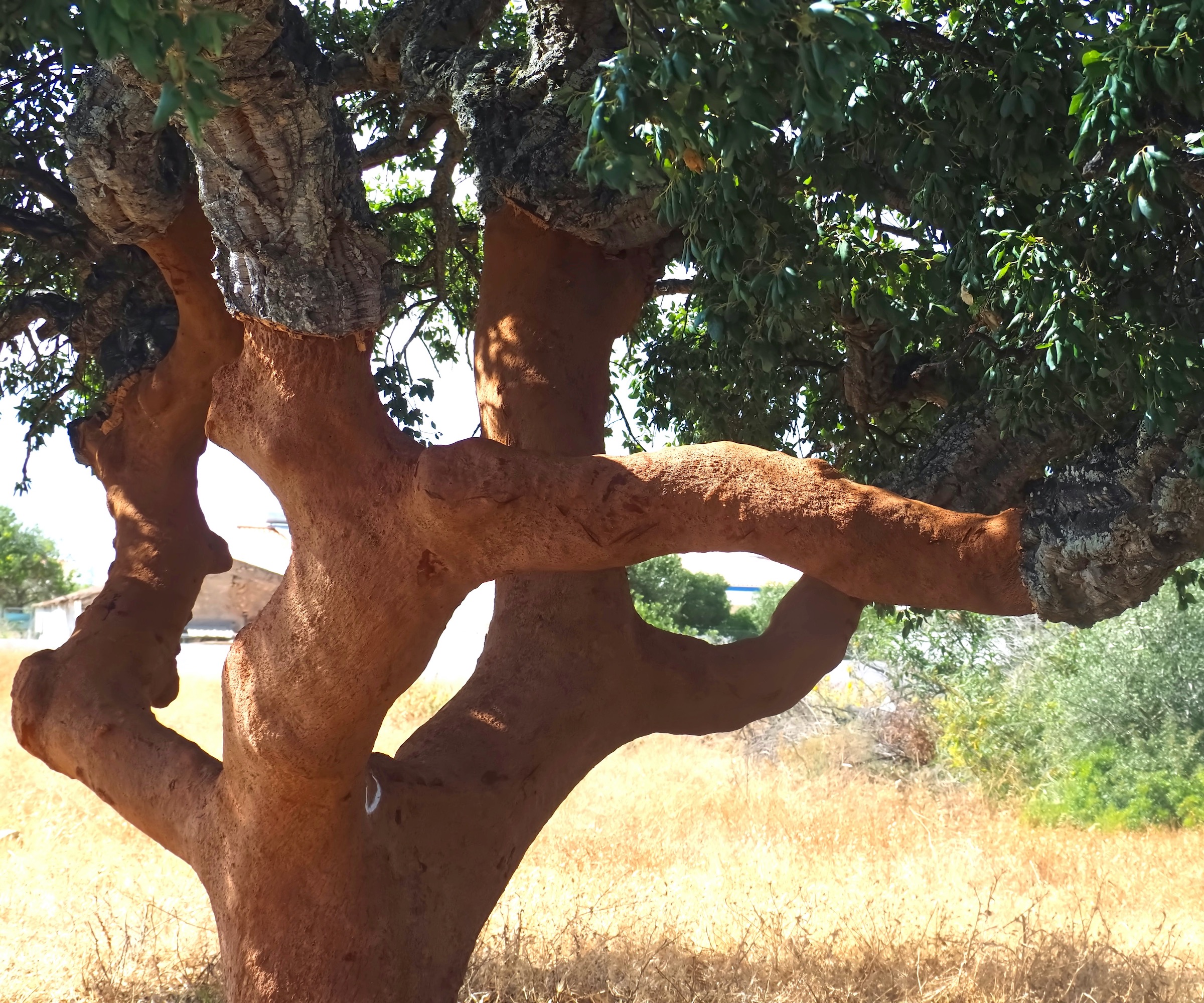
This tree’s bark is as useful as it is interesting to look at, as cork is an environmentally friendly material that has an incredible variety of applications, most famously as a bottle stopper.
‘The OG of interesting bark, the cork oak is used for wine corks, but looks great in a woodland garden,’ says AJ. ‘It has thick, deep folds of bark that are something to behold.’
Thriving in zones 8-10, this versatile evergreen can regenerate its outer bark, so once the tree has matured to the age of about 25, it can be harvested multiple time for cork without damaging it.
Though it looks craggy and grey on the outside, it is brick red underneath until the new bark forms.
Native to to the Mediterranean, it likes the heat and is sensitive to cold, making it vulnerable to late spring frosts. Plant it in full sun in well-drained, sandy soil and it will reach heights of up to 100 feet.
9. Paper Bark Maple (Acer griseum)
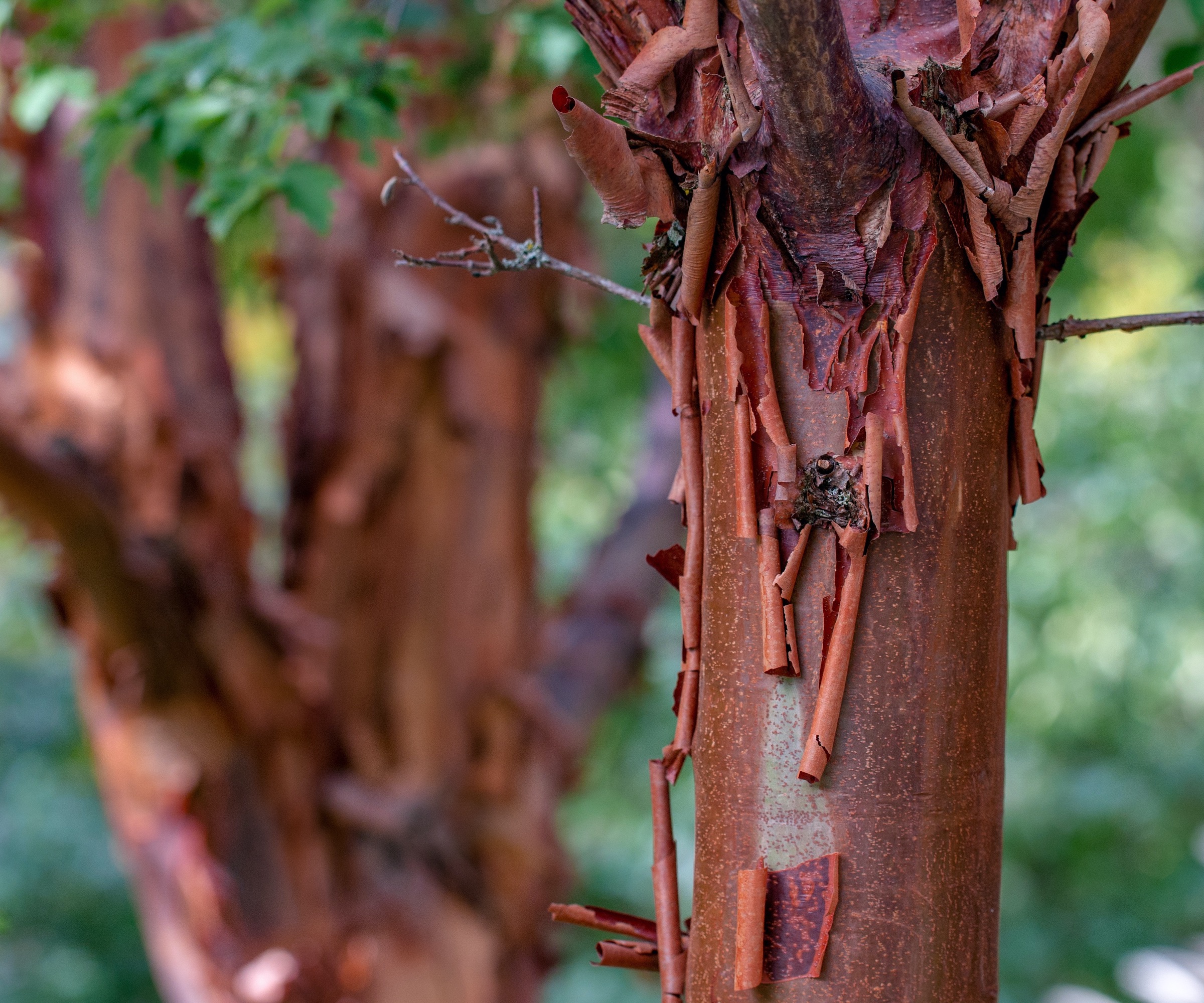
‘This has orange peeling bark which adds intense winter interest to what is a low-maintenance, easy-to-establish, small-sized tree,’ says Lisa. ‘The leaves also turn a bright red color in fall.
‘The bark's orange color and peeling effect won’t be fully present on young trees, so you will need to wait three or so years to see the final look.’
Growing well in zones 4-8, the Paperbark Maple likes partial to full sun and moist, well-drained soil. It needs relatively minimal upkeep - just a light prune in winter to give it shape.
Be fascinated as the Paperbark Maple, such as this one from Scenic Hill Farm Nursery, sheds its outer skin.
10. Heritage River birch (Betula nigra 'Cully')
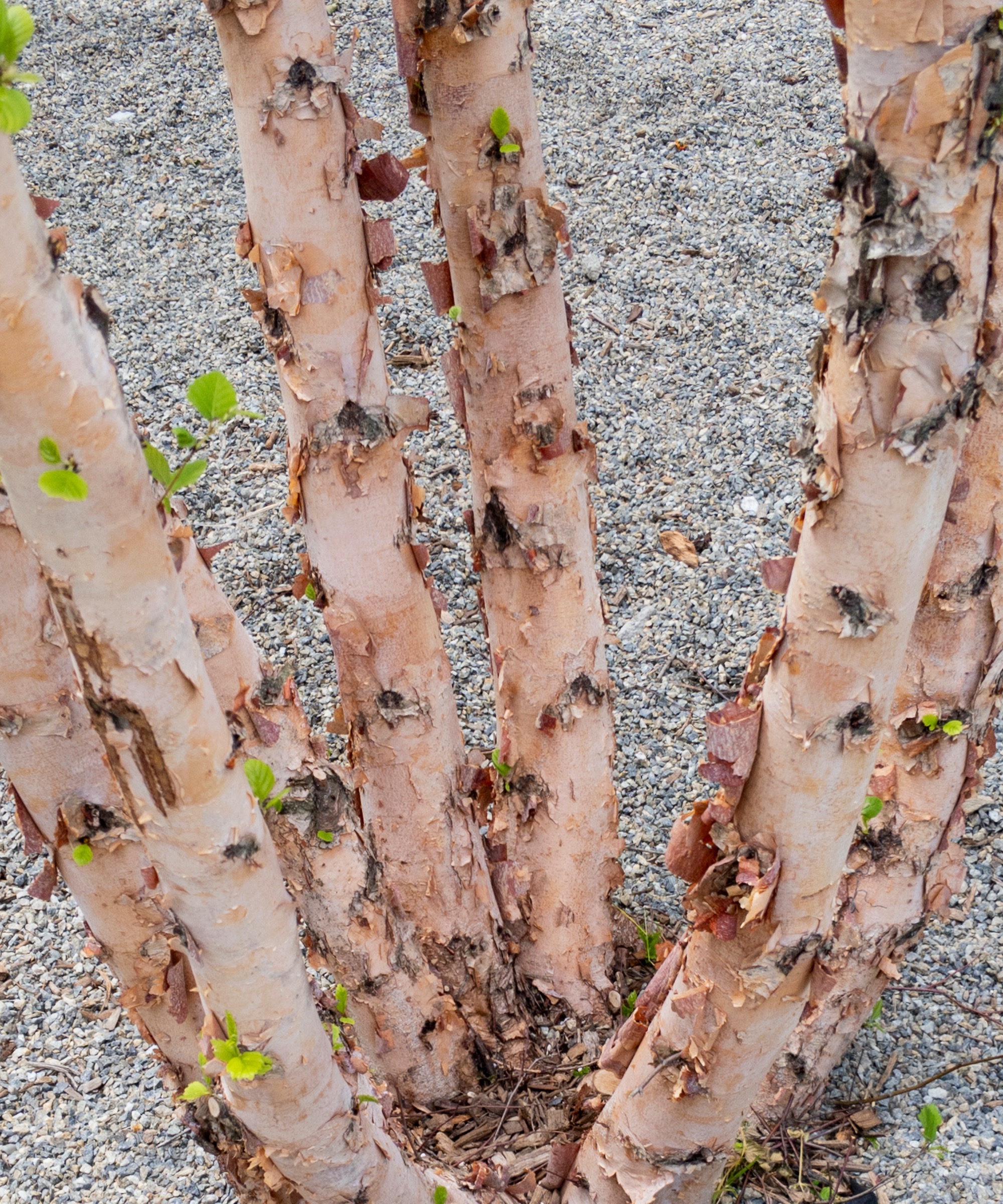
Birches are famous for the light almost luminous beauty of their long, slender trunks, and the River Birch also possesses this ethereal grace.
‘It is similar to a white paper bark birch tree but the white color is creamier with hints of orange and yellow, and the peeling effect tends to be more pronounced,’ says Lisa.
‘This tree is also a great choice because it is resistant to bronze birch borer, which has been killing many other varieties of birch tree.'
Native to eastern North America, River Birch thrives in zones 4-9. As the name suggests, it can commonly be found alongside streams, in floodplains or in swamps. To grow it successfully in a yard, try to mimic its natural habitat by planting in moist, acdic soils, exposed to full sun or partial shade.
The Heritage River Birch Tree from Fast Growing Trees will flourish in almost any region.
A tree with a wide canopy can provide much needed shade when it's hot, but it can also block anything from growing underneath. Never fear, as our guide to the best plants to grow under trees details plants and flowers will thrive beneath the branches.
Sign up to the Homes & Gardens newsletter
Design expertise in your inbox – from inspiring decorating ideas and beautiful celebrity homes to practical gardening advice and shopping round-ups.

Alison is a contributing gardens writer for Homes & Gardens, writing on a range of topics from plant care to garden design. She has recently landscaped the outside space of her Victorian home, replacing crazy paving and cracked slabs with new lawn, and is currently cultivating a fruit bed.
You must confirm your public display name before commenting
Please logout and then login again, you will then be prompted to enter your display name.
-
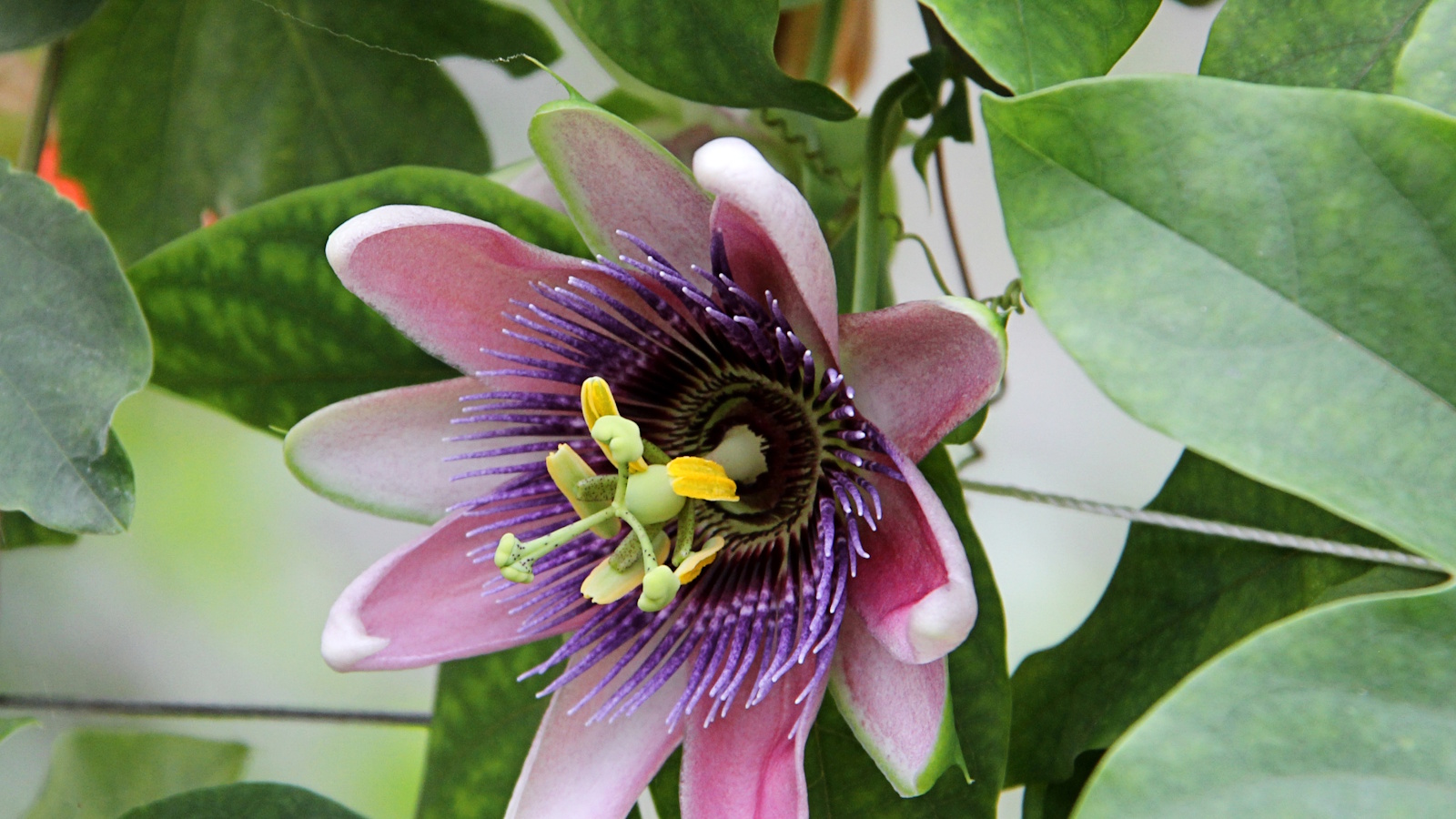 How to fertilize passion flowers – an expert grower reveals the secrets to caring for these hungry climbing plants
How to fertilize passion flowers – an expert grower reveals the secrets to caring for these hungry climbing plantsFeeding your passion flowers at the right time will give them a boost
-
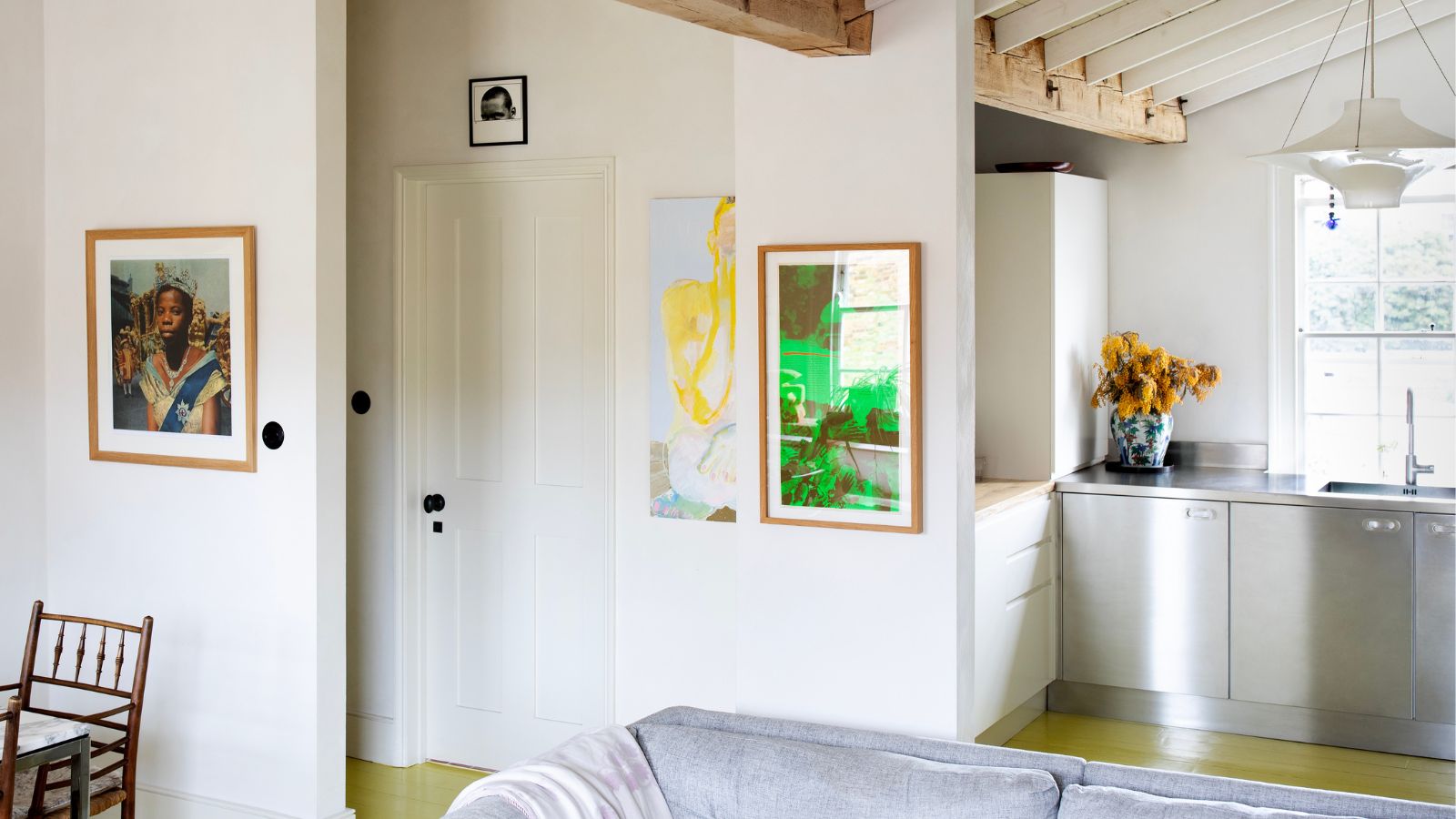 Stainless steel cabinets, retro lighting, and a bright yellow floor transformed this tired 1960s apartment kitchen into the most 'effortlessly cool' Parisian-inspired space
Stainless steel cabinets, retro lighting, and a bright yellow floor transformed this tired 1960s apartment kitchen into the most 'effortlessly cool' Parisian-inspired spaceThis might be a tiny space, but it goes big on style